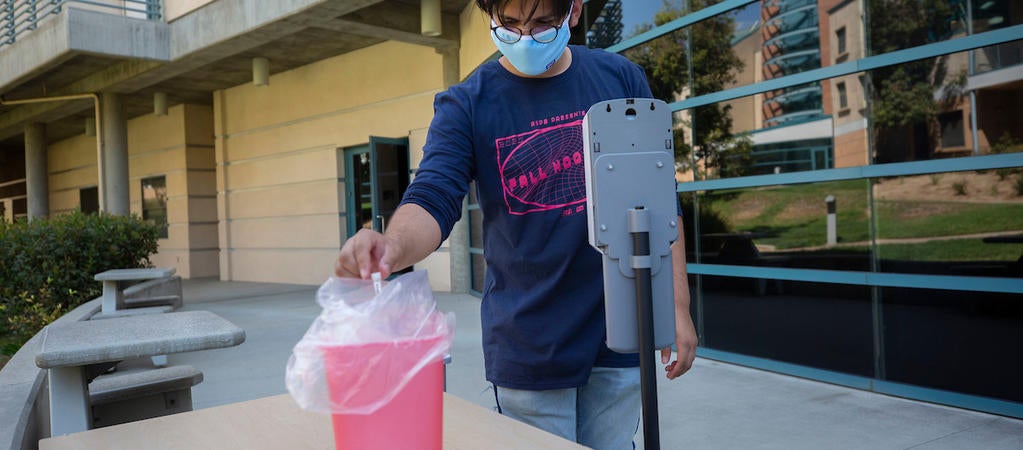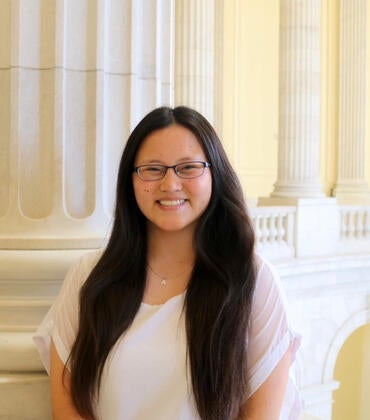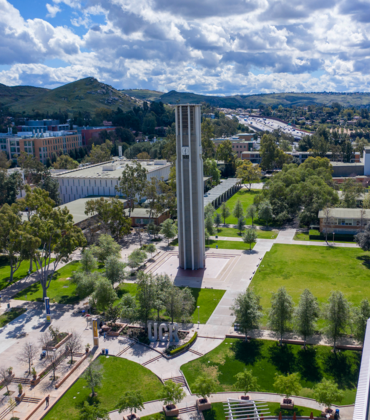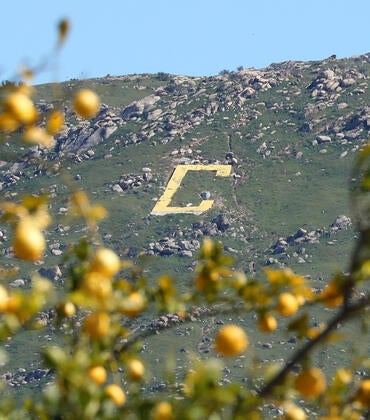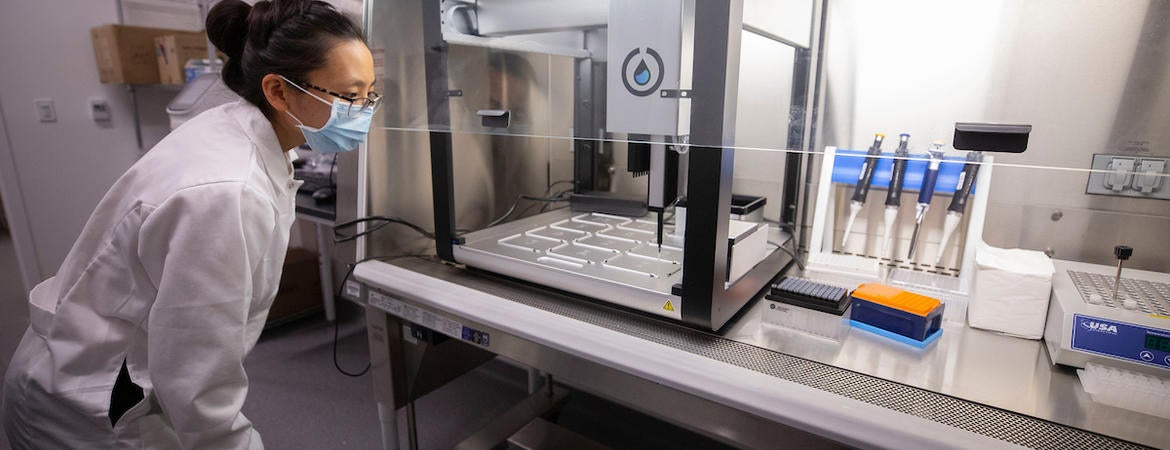
Since mid-April, UC Riverside has had only a handful of positive COVID-19 cases, continuing a rapid decline that began in January.
Campus leaders involved in COVID-19 prevention efforts credit the low positivity rate to proactive efforts including the creation of a homegrown diagnostic lab, regular testing of students, and continuous messaging about the importance of social distancing and wearing face coverings.
From September through mid-April, the campus conducted nearly 29,000 tests on campus with a positivity rate of 0.41%.
Since February, the number of positive cases each week has been in the single digits with zero cases many weeks. During the same period, vaccination rates have risen. Since January, UCR Health administered nearly 5,000 shots at its on-campus clinic, many to employees.
“What’s nice is seeing all of the negative test results,” said Katherine Borkovich, a professor and chair of the Department of Microbiology and Plant Pathology, who oversees the on-campus COVID-19 diagnostic lab. “We’re coming out of this crisis, and UCR did well in terms of our positivity rate.”
Borkovich and her colleagues from the College of Natural and Agricultural Sciences assembled the lab from scratch, borrowing some equipment from colleagues and creating their own testing kits.
Operating out of two rooms in the Multidisciplinary Research Building, the lab processed up to 500 samples a day from students living in residence halls and some employees continuing to work on campus.
All students living in campus housing were required to get tested before they moved in and have been tested twice a week throughout the academic year.
(UCR/Stan Lim)
From the start, the campus adopted the motto of “We’re all in this together” in its messaging to students, said Denise Woods, assistant vice chancellor for Health, Counseling & Wellness.
It was a sentiment reinforced by employees in Residential Life, Housing & Dining, Student Health Services, and others who interacted with students. The message was also amplified in university videos, social media, emails, and other official channels.
“They’re very smart; they can handle information and they want information,” Woods said of UCR students. “For us, the focus is almost to overcommunicate because there’s so much noise from the outside about vaccines or testing.”
An animated COVID-19 educational video created as a module was viewed by more than 20,000 students.
Residence halls only housed one student per room and students were assigned to “pods,” interacting with a small cohort to minimize COVID-19 exposure. Virtual and socially distanced outdoor activities continued to offer students a way to connect.
“It was really a combined effort where students did feel like they were in a cocoon, in a bubble,” Woods said. “I think that’s the biggest accomplishment, creating this bubble for students to be on campus and to still have experienced the college life during a pandemic.”
In recent weeks, the campus has begun to see a drop in the number of students getting tested due in part to an increasing number of students who have gotten vaccinated, Woods said.
With the University of California considering a policy mandating vaccination for students returning in the fall, the campus is encouraging students to get vaccinated as soon as possible wherever they can.
A key to the success of the program was the ease of the COVID-19 test, which students could complete in three to five minutes, said William Rall, senior administrative director of Student Health Services, which oversaw the testing and collecting of student samples.
The lab switched early in the process from using nasal to saliva swabs. Students were placed into testing groups with assigned days to submit their samples at the Bear Cave in Pentland Hills. With a quick scan of their smartphones, students could check in, spit into a vial, and create a label that tracks their sample with results typically reported within 24 hours.
Rall said the successful effort was the result of many campus departments and groups coming together to create and run the program.
“This is a microcosm of what UCR can be,” Rall said. “We have people linked together and aligned with the same mission just having synergy.”
